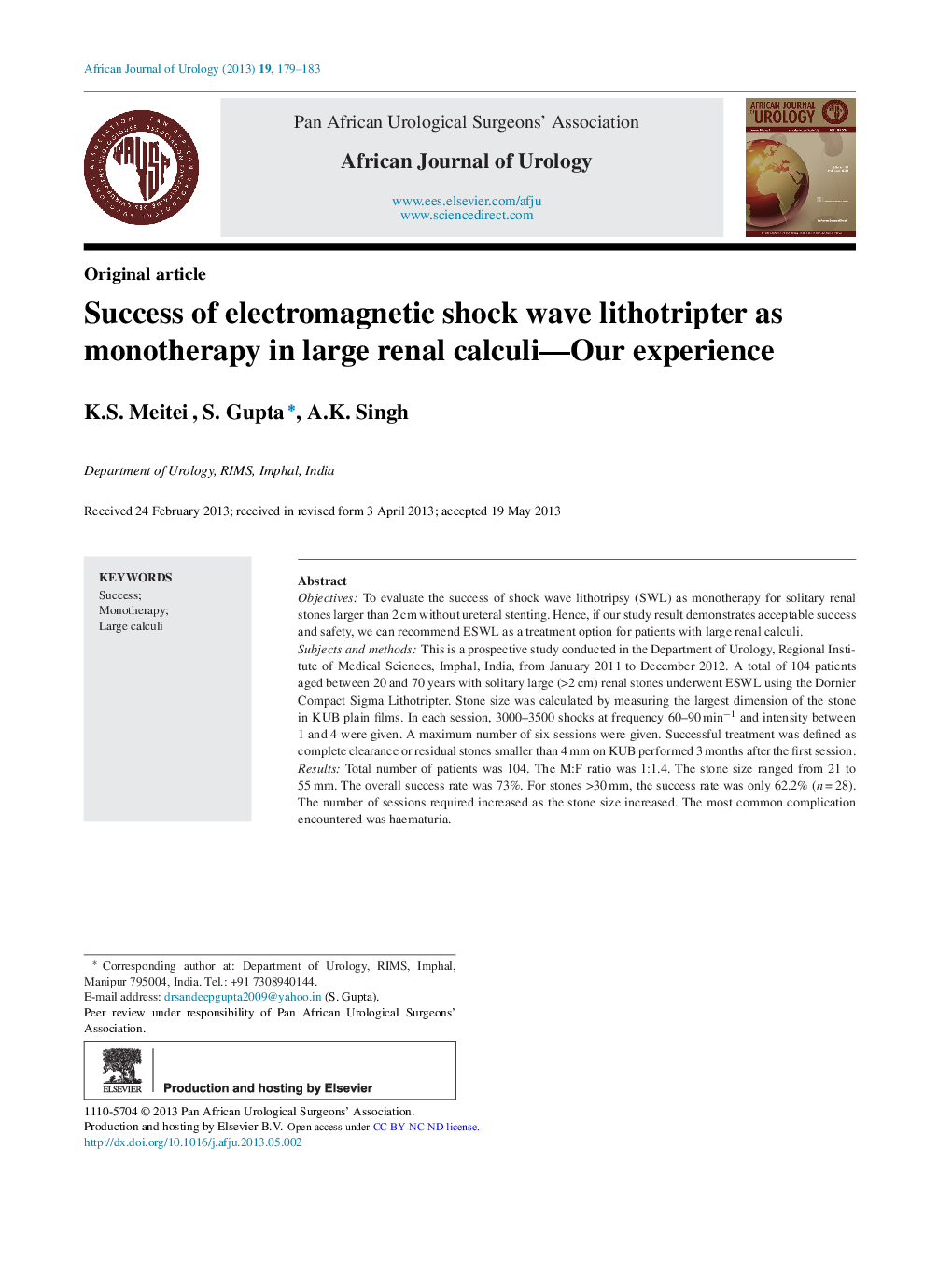| Article ID | Journal | Published Year | Pages | File Type |
|---|---|---|---|---|
| 4267674 | African Journal of Urology | 2013 | 5 Pages |
ObjectivesTo evaluate the success of shock wave lithotripsy (SWL) as monotherapy for solitary renal stones larger than 2 cm without ureteral stenting. Hence, if our study result demonstrates acceptable success and safety, we can recommend ESWL as a treatment option for patients with large renal calculi.Subjects and methodsThis is a prospective study conducted in the Department of Urology, Regional Institute of Medical Sciences, Imphal, India, from January 2011 to December 2012. A total of 104 patients aged between 20 and 70 years with solitary large (>2 cm) renal stones underwent ESWL using the Dornier Compact Sigma Lithotripter. Stone size was calculated by measuring the largest dimension of the stone in KUB plain films. In each session, 3000–3500 shocks at frequency 60–90 min−1 and intensity between 1 and 4 were given. A maximum number of six sessions were given. Successful treatment was defined as complete clearance or residual stones smaller than 4 mm on KUB performed 3 months after the first session.ResultsTotal number of patients was 104. The M:F ratio was 1:1.4. The stone size ranged from 21 to 55 mm. The overall success rate was 73%. For stones >30 mm, the success rate was only 62.2% (n = 28). The number of sessions required increased as the stone size increased. The most common complication encountered was haematuria.ConclusionESWL remains the cornerstone of therapy for renal calculi less than 2 cm. Our study reveals that multiple sessions were required for solitary renal calculi, with higher rate of ancillary procedures. The success rate of ESWL for both non-staghorn and staghorn calculi with size above 2 cm is low, so other treatment modalities like PCNL should be considered as the first treatment option. However, with appropriate patient selection, significant improvements in stone-free rates may be achieved.
